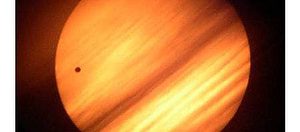Summer is set to kick-off with a series of beautiful Venus related events, from an astronomical point of view at least. This week, the planet will appear at its brightest in the night sky, as it nears almost ideal observational circumstances – close distance to Earth and sun phase. Also, at the beginning of June, Venus will pass across the face of the sun, in an event commonly referred to as the Venus transit which occurs every century or so.

Through a telescope this week, Venus will look like a miniature version of a five-day-old moon, except without any mountains, lava seas or craters. Even a set of binoculars aimed at the bright planet during this week will make it look like a tiny crescent.
On June 5 a special event will occur, also with Venus at its center when it will transit over the sun. During this time Venus will pass between the Earth and the sun, appearing as a black dot silhouetted against the sun for around six hours, for the last time until 2117. Transits occur in pairs separated by eight years – the last one was in 2004 – with the gap between pairs alternating between 105.5 and 121.5 years.
By studying the event, called Venus transit, physicist and astronomers hope to gain further insight which might help them in their quest for finding life supporting exoplanets. With this in mind, for the occasion, scientists are planning to use Earth telescopes, as well as the Hubble Space Telescope to watch Venus’s transit very slightly darkening the moon.
“Doing so verifies that the techniques for studying events on and around other stars hold true in our own backyard,” he says.
“In other words, by looking up close at transits in our solar system, we may be able to see subtle effects that can help exoplanet hunters explain what they are seeing when they view distant suns.”









